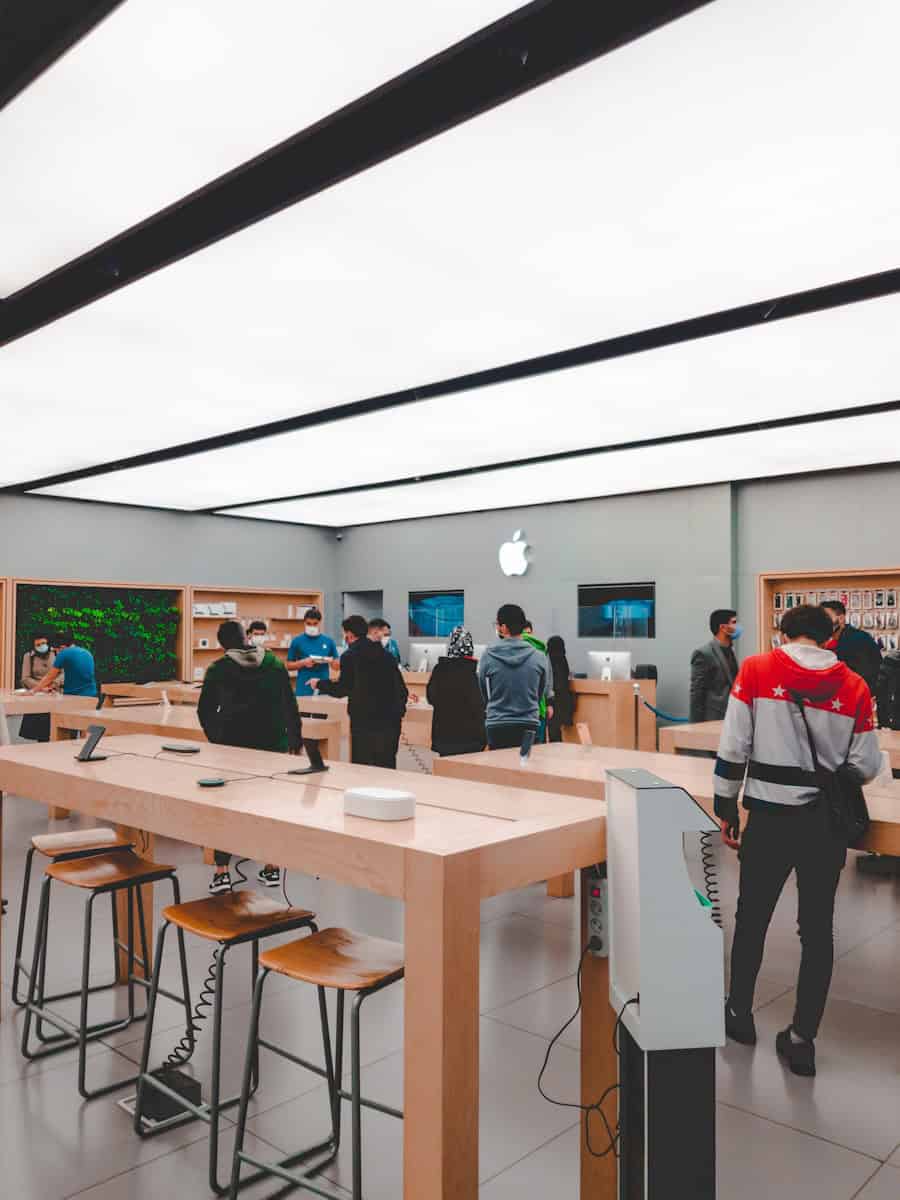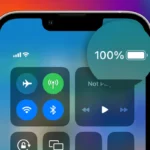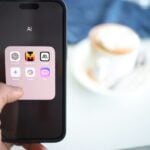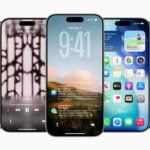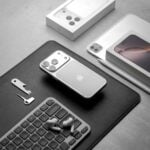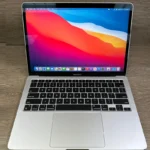Ready to upgrade your iPhone? Getting top dollar for your old device can make a big difference in your wallet. With so many trade-in options available today, knowing where and how to get the most value is key to making a smart switch.
The best way to maximize your iPhone trade-in value is to compare offers from multiple sources like Apple’s official trade-in program, carrier deals, and third-party buyers such as SellCell which compares prices from various iPhone buyers. Before trading in your device, make sure it’s in good condition by cleaning it, removing personal data, and including original accessories if possible.
Timing matters when trading in your iPhone. Values typically drop after new models are announced, so planning your upgrade strategically can help you get more money. Most trade-in services make the process simple – they assess your phone’s condition, give you a quote, and provide payment options once you send in your device.

How to Get the Most iPhone Trade-In Value: A Complete Guide
Trading in your iPhone is a smart way to offset the cost of a new device or simply cash out on your old phone. However, to maximize the trade-in value, you need to prepare your iPhone properly and understand what factors impact its worth. Here’s a step-by-step guide to help you get the best price when trading in your iPhone in 2025.
1. Understand What Affects Your iPhone’s Trade-In Value
Several key factors influence how much you can get for your iPhone:
| Factor | Impact on Trade-In Value |
|---|---|
| Model and Age | Newer models (e.g., iPhone 14, 15) fetch higher prices. |
| Physical Condition | Phones with minimal scratches, dents, or cracks are valued more. |
| Functional Condition | Fully working devices with no screen issues, battery problems, or camera faults get top dollar. |
| Storage Capacity | Higher storage variants (256GB, 512GB) typically trade for more. |
| Market Demand | Popular models in high demand can command better offers. |
| Original Accessories and Packaging | Including original box, charger, and cables can sometimes increase value. |
2. Prepare Your iPhone for Trade-In
- Backup Your Data: Use iCloud or iTunes to back up all your important data.
- Erase All Content and Settings: Go to Settings > General > Reset > Erase All Content and Settings to wipe your device clean.
- Remove SIM Card: Take out your SIM card to avoid losing your phone number or data.
- Fix Minor Issues: Repair cracked screens or replace faulty batteries if the cost is reasonable compared to the value increase.
- Clean Your Device: A clean, fingerprint-free phone looks more appealing to buyers and trade-in services.
3. Compare Trade-In Offers
Trade-in values vary across platforms: Apple’s official trade-in program, carrier trade-ins (like Verizon or AT&T), third-party buyback services, and private sales. Use online calculators and comparison tools to find the best offer.
4. Consider Timing
iPhone trade-in values tend to be highest right before or shortly after a new model release, when demand for older models spikes. For example, trading in an iPhone 14 just before the iPhone 15 launch in September can maximize your return.
5. Use Promotions and Bonuses
Sometimes carriers or Apple run limited-time promotions that increase trade-in values or offer bonus credits. Keep an eye on these deals to boost your trade-in payout.
Summary Table: Tips to Maximize iPhone Trade-In Value
| Step | Action | Why It Matters |
|---|---|---|
| Choose the Right Time | Trade-in near new model launches | Higher demand increases value |
| Maintain Device Condition | Avoid scratches, cracks, and defects | Better condition = higher offers |
| Backup & Reset | Secure data and wipe phone | Prepares phone for new owner |
| Compare Offers | Check Apple, carriers, and third parties | Find best payout |
| Look for Promotions | Use bonus trade-in credits | Extra value on top of base price |
By following these steps, you can confidently trade in your iPhone and get the most money back, helping you upgrade or cash out with maximum value.
Key Takeaways
- Compare trade-in values across multiple platforms including Apple Trade In, carriers, and third-party buyers to find the highest offer.
- Keep your iPhone in good condition with a case, screen protector, and regular cleaning to maintain its resale value.
- Trade in your device before new iPhone models launch to avoid the value drop that typically follows Apple announcements.
Understanding Trade-In Value
When trading in your iPhone, knowing what affects its value and how different trade-in programs compare can help you get the most money possible.
Factors Influencing Trade-In Price
The condition of your device plays the biggest role in its trade-in value. Your iPhone must be able to turn on, charge properly, and function without issues to qualify for maximum value. Clean the outside of your phone thoroughly before evaluation, as Apple store employees take photos during assessment.
Other key factors include:
- Model and age: Newer iPhone models fetch higher prices
- Storage capacity: Higher GB/TB options are worth more
- Screen condition: No cracks or scratches
- Battery health: Above 80% is preferable
- Original parts: Non-Apple replacement parts lower value
Having your original packaging, charger, and accessories can also slightly boost your trade-in offer at some locations.
Comparing Trade-In Programs
Apple offers trade-in options both online and in-store, providing store credit or direct discounts on new purchases. This can be convenient when buying a new iPhone directly. However, Apple doesn’t always offer the highest value compared to alternatives.
Other popular trade-in programs include:
| Program | Advantages | Disadvantages |
|---|---|---|
| Carrier trade-ins | Special promotions, bill credits | Often requires new plan |
| Retail stores | Immediate payment, convenience | Sometimes lower values |
| Online buyback services | Often higher values | Shipping required, delayed payment |
Third-party services frequently provide better values than Apple’s program. It’s worth checking multiple options before deciding. Some services allow you to lock in a quote for 30 days, giving you time to transfer data and set up a new phone.
Preparing Your iPhone for Trade-In
Proper preparation of your iPhone before trade-in can significantly increase its value and protect your personal information. Taking the time to back up your data, reset your device, and clean it thoroughly makes a big difference in the final offer.
Backing Up Data
Before trading in your iPhone, you need to save all your important information. Connect your iPhone to Wi-Fi and go to Settings > [your name] > iCloud > iCloud Backup. Tap “Back Up Now” and wait for the process to complete.
For an alternative method, connect your iPhone to a computer and use iTunes or Finder. This works well for older models like the iPhone 8 that might have limited iCloud storage.
You can also use the Quick Start feature if you already have your new device. This works particularly well when upgrading from an iPhone 12 to newer models like the iPhone 13 Pro Max.
Make sure to verify that your backup completed successfully by checking the timestamp of your last backup in iCloud settings.
Restoring to Factory Settings
After backing up, you need to remove all your cards from Apple Pay and sign out of iCloud and the App Store. Go to Settings > [your name], scroll down and tap “Sign Out.”
Next, erase all content by going to Settings > General > Reset > Erase All Content and Settings. This step is crucial for protecting your personal data.
For iPhone 12 Pro Max and newer models, you’ll need to enter your Apple ID password to turn off Activation Lock. This security feature prevents others from using your device if it’s lost or stolen.
The reset process might take 5-10 minutes depending on your iPhone model. Older phones like the iPhone 8 might take longer than newer devices like the iPhone 13 Pro Max.
Physical Cleaning Tips
Clean your iPhone thoroughly before trade-in evaluation. Use a soft, lint-free cloth slightly dampened with water to wipe the screen and body.
Remove your case and screen protector, then clean underneath. Pay special attention to ports and speaker grilles, using a soft brush or canned air to remove lint or dust.
For iPhone 12 and iPhone 13 Pro Max models with the ceramic shield display, avoid using harsh chemicals that might damage the special coating.
Items to clean:
- Screen (free of fingerprints)
- Camera lenses
- Charging port
- Speaker and microphone grilles
- Sides and back
Check for any scratches or cracks that might lower your trade-in value. Apple and other buyers take pictures of your phone during evaluation, so every detail matters.
Selecting the Right Platform for Trade-In
Choosing where to trade in your iPhone can mean the difference between getting top dollar or settling for less. Different platforms offer varying value based on their business models and current market demands.
Trade-In via Carrier Programs
Major carriers like T-Mobile and Verizon often run promotional trade-in deals when new iPhone models launch. These offers can be quite generous, especially for customers signing up for new service plans.
Carrier trade-ins typically provide credit toward a new device rather than cash. This works well if you’re staying with the same carrier and upgrading your phone.
T-Mobile frequently offers “up to $1000” trade-in credits for newer iPhones in good condition. These credits are usually applied over 24-36 monthly bill cycles.
Verizon similarly provides competitive trade-in values, but the best deals are reserved for unlimited plan subscribers. Their trade-in process is straightforward through their website or in-store.
The main advantage of carrier trade-ins is convenience. You can handle everything in one transaction when upgrading your service.
Trade-In with Retailers
Retail stores offer another solid option for trading in iPhones. The Apple Store provides a streamlined experience with instant credit toward new purchases.
Apple’s trade-in program offers fair market value and the benefit of professional assessment. They also provide immediate credit if trading in-store, making it easy to apply toward a new purchase.
Other retailers like Carphone Warehouse, Currys, CEX, and Music Magpie in the UK offer trade-in programs with varying values. These retailers often run promotions that may beat Apple’s standard offers.
The benefit of retail trade-ins is immediate gratification. You walk in with your old iPhone and potentially walk out with a new device or store credit. Some retailers also offer price-matching if you find better deals elsewhere.
Online Trade-In Marketplaces
Online marketplaces often provide the highest potential returns but require more effort. Platforms like eBay, Facebook Marketplace, and Swappa connect you directly with buyers.
These peer-to-peer platforms eliminate the middleman, allowing you to set your own price. iPhones in excellent condition can fetch 20-30% more than trade-in programs.
Specialized electronics buyers like Gazelle, BuybackBoss, SellYourMac, BackMarket, and Envirofone offer simplified selling experiences. They provide free shipping labels and quick payment after inspection.
Online marketplaces require more work – creating listings, communicating with buyers, and handling shipping. However, services like SmartphonesPLUS.com make the process easier while still offering competitive rates.
To maximize value, compare offers from multiple platforms before deciding. Condition matters greatly – fixing minor issues and thoroughly cleaning your iPhone can significantly increase its trade-in value.
Maximizing Trade-In Value
Getting top dollar for your old iPhone requires strategy and preparation. The right timing, proper device care, and smart upgrades can significantly boost what carriers and retailers offer you.
Timing Your Trade-In
The best time to trade in your iPhone is right before Apple announces new models, typically in September. Trade-in values for older models often drop after new iPhone releases, sometimes by up to 30%.
Consider selling your device in August if you’re upgrading to a new model like the iPhone 16. Many buyers increase their offers during this time to attract customers.
The iPhone upgrade program from Apple can help you avoid timing issues altogether. This program lets you get a new iPhone every year while spreading payments over 24 months.
Another good time is during promotional periods. Carriers often run special trade-in deals during holidays or when launching new phones.
Watch for retailer-specific promotions that might offer better values than Apple’s standard trade-in program.
Assessing Your iPhone’s Condition
Before trading in, honestly evaluate your device’s condition. Apple and other buyers take pictures of your phone during evaluation, so prepare it properly.
Cleaning checklist:
- Wipe the screen with a microfiber cloth
- Clean ports with compressed air
- Remove dirt from speaker grills
- Clean the camera lenses thoroughly
Value-reducing factors:
- Cracked screens or back glass
- Significant scratches or dents
- Battery health below 80%
- Non-functioning buttons or features
Removing your screen protector might reveal hidden cracks, but doing so before evaluation could expose previously protected areas to damage.
Always back up your data and reset your iPhone to factory settings before trading in. This protects your information and ensures a smooth transaction.
Upgrading or Repairing Before Trading In
Strategic repairs can significantly increase your iPhone’s trade-in value. For iPhone 14 or iPhone 15 models with cracked screens, professional repairs might cost $200-300 but could increase trade-in value by $350+.
When repairs make sense:
- Screen replacement (if trade-in boost exceeds repair cost)
- Battery replacement (if health is below 80%)
- Back glass repair (especially for newer models)
For minor issues, Apple’s self-service repair program offers official parts that maintain your device’s value. Third-party repairs might save money but could decrease trade-in value with some buyers.
If your iPhone has water damage indicators triggered, repairs are usually not worth the cost. In these cases, consider selling to specialty buyers who purchase damaged devices.
Remember that storage capacity affects value too. An iPhone 15 Pro with 512GB typically brings $100+ more than the 128GB version with identical condition.
Trade-In Process and Documentation
Preparing for an iPhone trade-in requires proper documentation and understanding how the process works. Taking the right steps ensures you get the best value for your device.
Gathering Necessary Documents
Before trading in your iPhone, collect all essential paperwork. First, locate your original proof of purchase or receipt, as some trade-in programs may request this to verify ownership.
Make sure you have your Apple ID password handy to remove your personal information from the device. This step is crucial for protecting your data and ensuring a smooth trade-in.
For carrier-locked phones, contact your service provider for any required unlocking codes or documentation. Many carriers have specific requirements before accepting trade-ins.
Take clear photos of your iPhone showing its condition from all angles. These photos can serve as evidence of the device’s state before submission if disputes arise later.
Create a checklist including:
- Proof of purchase
- Apple ID credentials
- Device IMEI number (found in Settings)
- Original accessories (if required)
Understanding the Trade-In Process
The Apple Trade In program and other services follow similar steps. First, the company evaluates your iPhone’s condition, checking for cracks, water damage, and functionality issues.
Physical inspections at stores involve staff taking pictures and running diagnostic tests. For online trade-ins, you’ll typically receive a shipping kit with protective packaging to send your device safely.
Most trade-in programs offer payment in the form of:
- Store credit
- Gift cards
- Direct discounts on new purchases
- Cash (less common)
The evaluation process usually takes 2-3 business days for in-person trades and 1-2 weeks for mail-in options. Cleaning your iPhone thoroughly before submission can improve its assessed value.
Be aware that the final trade-in value might differ from initial quotes if inspectors find undisclosed damage. Always read the terms carefully to understand the evaluation criteria used to determine your device’s worth.
Future-Proofing Your Next iPhone Purchase
Smart decisions when buying a new iPhone can save you money later when it’s time to trade up. Planning ahead makes a big difference in what your device will be worth down the road.
Considering Future Trade-In Value
When shopping for a new iPhone, think about how it will hold its value over time. The iPhone 15 and upcoming iPhone 16 models with more storage typically retain better trade-in value. Higher-end models like Pro and Pro Max versions usually fetch more when traded in later.
Consider joining the Apple Trade In program or iPhone upgrade program. These options let you upgrade more easily every year or two. This way, you always have a newer model that’s worth more.
Colors matter too! Neutral colors like black, white, and silver typically hold value better than trendy colors that might go out of style.
Avoid buying right before a new release. The iPhone 16 is expected in late 2024, so timing your purchase wisely can give you a newer model that will be worth more later.
Investing in Protective Accessories
Keeping your iPhone in good condition is crucial for getting top trade-in value. Clean your device regularly and invest in quality protection from day one.
Essential protective gear:
- High-quality case with drop protection
- Screen protector (tempered glass offers best protection)
- Camera lens cover for newer models with multiple lenses
Consider AppleCare+ as an investment. It helps you fix any damage at lower cost, ensuring your phone stays in good condition for future trade-ins.
Store your accessories and original packaging. Having the original box and unused accessories can increase your iPhone’s value when selling privately rather than trading in.
Keep charging cables in good condition and avoid using off-brand chargers that might damage your battery health over time.
Frequently Asked Questions
Trading in your iPhone can be confusing with many options to consider. Here are answers to common questions about getting the best value for your device.
What steps should be taken to prepare an iPhone for trade-in to maximize its value?
Before trading in your iPhone, make sure it works properly. Your device must turn on and off without issues and charge normally to qualify for most trade-in offers.
Clean your iPhone thoroughly to remove fingerprints, dirt, and debris. Use a microfiber cloth to wipe the screen and body.
Remove personal data by backing up your information, then perform a factory reset. Don’t forget to turn off Find My iPhone and sign out of iCloud.
Include original accessories if possible. Boxes, chargers, and cables can sometimes boost trade-in value.
When is the ideal time to trade in an iPhone for the highest value?
The best time to trade in your iPhone is 1-2 months before a new model releases. Apple typically announces new iPhones in September.
iPhone values drop significantly after new models launch. Trading in before the announcement can get you up to 30% more value.
Winter months (January-March) often see stable trade-in values. This can be a good time if you missed the pre-launch window.
Which factors influence the trade-in value of an iPhone?
Model and age greatly affect trade-in value. Newer models naturally command higher prices than older versions.
Storage capacity matters. iPhones with larger storage (256GB, 512GB) typically receive better offers than base models.
Physical condition is crucial. Devices without cracks, scratches, or dents get top dollar. Even minor cosmetic damage can reduce value.
Battery health significantly impacts trade-in offers. iPhones with batteries at 80% capacity or higher get better values.
What is the expected trade-in value range for different iPhone models?
Recent flagship models (iPhone 14 Pro, iPhone 15) can fetch $350-$650 depending on condition and storage capacity.
Mid-range models (iPhone 12, iPhone 13) typically bring $150-$400 when traded in through Apple’s official program.
Older models (iPhone X, iPhone 11) generally range from $50-$200 depending on condition and where you trade in.
Budget models (iPhone SE) usually bring $40-$150 in trade-in value based on generation and condition.
How do carrier trade-in programs compare to Apple’s trade-in values?
Carrier promotions often offer higher values but typically require new line activation or specific plan upgrades. These deals can sometimes exceed Apple’s offers by $100-$300.
Apple’s trade-in program provides instant credit toward a new device without requiring plan changes. Their values tend to be more consistent.
Third-party services like Gazelle or ecoATM might offer cash instead of credit. However, their values are usually 10-20% lower than Apple’s offers.
What strategies can be utilized to ensure the best return on iPad trade-ins?
Compare multiple trade-in options before deciding. Check values from Apple, carriers, and third-party buyers to find the best deal.
Consider timing carefully. Like iPhones, iPads lose value after new models launch, so trading in before announcements is smart.
Keep all original accessories and packaging. iPads with original boxes, cables, and adapters can receive up to 15% more value.
Cellular-enabled iPads generally have higher trade-in values than WiFi-only models. This difference can be $50-$100 for newer models.

